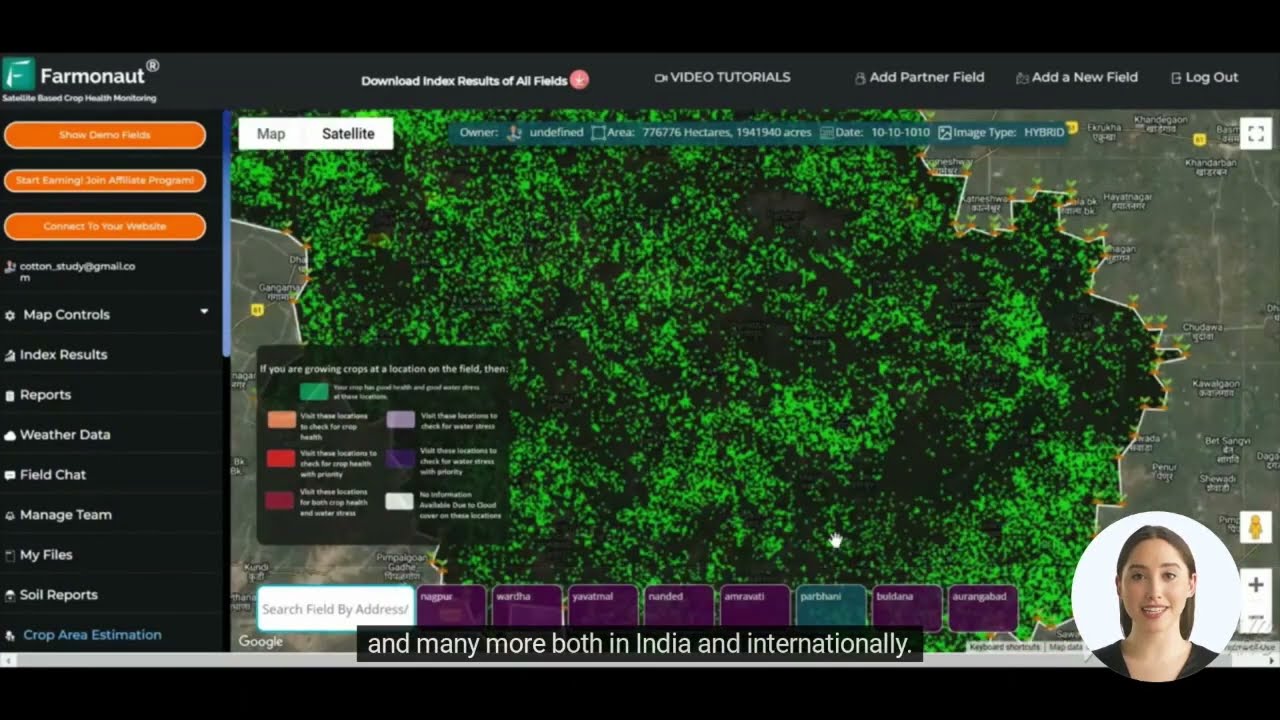Sustainable Cluster Farming: Boosting Ethiopia’s Agricultural Productivity and Food Sovereignty in Amhara Region
“Ethiopia’s Amhara region aims to produce 300 million quintals of wheat through innovative cluster farming techniques.”

In recent years, we have witnessed a remarkable transformation in Ethiopia’s agricultural landscape, particularly in the Amhara region. The implementation of sustainable cluster farming techniques has revolutionized wheat cultivation and significantly boosted agricultural productivity. This innovative approach is not only enhancing food security but also driving the nation towards food sovereignty. In this comprehensive analysis, we will explore the sustainable agricultural development strategies implemented in the North Shewa Zone, with a special focus on the Moret and Jiru district.
The Rise of Cluster Farming in Amhara
Cluster farming has emerged as a game-changer in Ethiopia’s agricultural sector. This method involves grouping farmers in close proximity to cultivate similar crops, sharing resources, knowledge, and infrastructure. In the Amhara region, particularly in the North Shewa Zone, cluster farming has been instrumental in transforming wheat production and other key crops.
- Improved resource allocation
- Enhanced knowledge sharing among farmers
- Streamlined access to agricultural inputs
- Increased bargaining power for farmers
The success of cluster farming in Amhara is evident in the impressive yields achieved through improved farming methods, effective fertilizer and seed management, and the cultivation of various crops including teff and corn.
Innovative Irrigation Practices
One of the key factors contributing to the success of sustainable cluster farming in Ethiopia is the implementation of innovative irrigation practices. These methods have significantly enhanced crop yields and allowed for year-round cultivation, even in areas previously limited by seasonal rainfall.
- Drip irrigation systems for water efficiency
- Rainwater harvesting techniques
- Solar-powered irrigation pumps
- Precision irrigation using satellite data
By leveraging these advanced irrigation techniques, farmers in the Amhara region have been able to optimize water usage and extend growing seasons, leading to increased agricultural productivity.
Crop Diversity: A Key to Food Security
While wheat remains a primary focus, the cluster farming approach in Amhara has also emphasized crop diversity as a crucial component of food security and sustainable agriculture. By cultivating a variety of crops, farmers can:
- Reduce vulnerability to crop-specific diseases and pests
- Improve soil health through crop rotation
- Enhance nutritional diversity for local communities
- Mitigate economic risks associated with market fluctuations
In addition to wheat, farmers in the Moret and Jiru district are successfully growing teff, corn, and other essential crops, contributing to a more resilient and diverse agricultural ecosystem.
Agricultural Technology Innovations
The adoption of cutting-edge agricultural technologies has played a pivotal role in the success of cluster farming in Ethiopia. These innovations have empowered farmers with data-driven insights and precision farming capabilities.
- Satellite-based crop monitoring
- AI-powered crop health analysis
- Weather forecasting and early warning systems
- Blockchain-based traceability for agricultural products
Companies like Farmonaut are at the forefront of this technological revolution, offering advanced satellite-based farm management solutions that are accessible to farmers via mobile apps and web platforms. These tools enable real-time crop health monitoring, resource management, and AI-based advisory systems, significantly contributing to the efficiency and productivity of cluster farming initiatives.
“Sustainable agricultural practices in Ethiopia’s North Shewa Zone have significantly boosted yields of wheat, teff, and corn.”
Improving Crop Yields Through Sustainable Practices
The impressive agricultural results in the Amhara region can be attributed to a combination of sustainable practices and effective management strategies. These include:
- Proper soil management and conservation techniques
- Integrated pest management
- Optimal use of organic and inorganic fertilizers
- Improved seed varieties adapted to local conditions
By implementing these practices, farmers in the Moret and Jiru district have achieved remarkable increases in crop yields, contributing significantly to the national agricultural objectives.

The Impact of Peace on Agricultural Development
The success of cluster farming in the Amhara region has been significantly bolstered by the prevailing peace, a result of effective collaboration between the National Defense Force and the regional government. This peaceful environment has allowed farmers to focus on development and has led to successful farming practices, particularly in wheat cultivation.
- Increased farmer confidence and investment in agriculture
- Improved access to markets and agricultural inputs
- Enhanced cooperation among farming communities
- Facilitated implementation of long-term agricultural strategies
The positive impact of peace on agricultural productivity underscores the importance of stability in achieving food sovereignty and sustainable development goals.
Fertilizer and Seed Management: A Key to Success
Effective fertilizer and seed management have been crucial factors in the success of cluster farming in the Amhara region. The timely provision of high-quality seeds and appropriate fertilizers has significantly enhanced crop yields and overall agricultural productivity.
- Precision application of fertilizers based on soil analysis
- Use of improved, drought-resistant seed varieties
- Training programs for farmers on optimal seed and fertilizer use
- Establishment of local seed banks and fertilizer distribution centers
These practices have not only improved crop yields but also contributed to the sustainability of farming operations in the region.
Projected Wheat Production and National Goals
The success of cluster farming in the Amhara region is playing a significant role in Ethiopia’s national agricultural objectives. According to recent projections:
- Wheat cultivation from the Meher season and irrigation practices is expected to yield about 300 million quintals
- The Amhara region alone is projected to harvest over 169 million quintals during the Meher farming season
- Wheat is expected to account for about 80 million quintals of the total harvest in Amhara
These impressive figures underscore the potential of sustainable cluster farming techniques in achieving food sovereignty and boosting national agricultural productivity.
Explore Farmonaut’s API for agricultural data
The Role of Technology in Agricultural Transformation
The integration of advanced technologies has been instrumental in the success of cluster farming initiatives in Ethiopia. Tools and platforms provided by companies like Farmonaut have enabled farmers to make data-driven decisions and optimize their agricultural practices.
- Satellite-based crop monitoring for real-time insights
- AI-powered advisory systems for personalized farming recommendations
- Blockchain technology for ensuring transparency in agricultural supply chains
- Mobile applications for easy access to agricultural information and services
These technological advancements have not only improved productivity but also made sustainable farming practices more accessible to smallholder farmers across the region.
Comparative Analysis of Cluster Farming Impact in Amhara Region
| Crop Type | Average Yield Before Cluster Farming (quintals/hectare) | Average Yield After Cluster Farming (quintals/hectare) | Percentage Increase in Yield | Key Sustainable Practices Implemented |
|---|---|---|---|---|
| Wheat | 25 | 40 | 60% | Improved seed varieties, precision irrigation |
| Teff | 12 | 18 | 50% | Row planting, balanced fertilizer application |
| Corn | 30 | 45 | 50% | Integrated pest management, conservation tillage |
| Barley | 20 | 32 | 60% | Crop rotation, soil moisture conservation |
| Chickpeas | 15 | 22 | 47% | Rhizobium inoculation, intercropping |
This table clearly demonstrates the significant impact of cluster farming techniques on crop yields in the Amhara region. The implementation of sustainable practices has led to substantial increases in productivity across various crops, contributing to the region’s agricultural success and food security goals.
Challenges and Future Prospects
While the success of cluster farming in the Amhara region is undeniable, there are still challenges to overcome and opportunities for further improvement:
- Scaling up sustainable practices to reach more farmers
- Enhancing infrastructure for better market access
- Addressing climate change impacts on agriculture
- Continuing to improve agricultural education and training programs
By addressing these challenges and capitalizing on the momentum gained, Ethiopia can further strengthen its agricultural sector and move closer to achieving complete food sovereignty.
The Path to Food Sovereignty
The success of sustainable cluster farming in the Amhara region is a significant step towards Ethiopia’s goal of food sovereignty. By increasing agricultural productivity, diversifying crops, and implementing innovative farming techniques, the country is reducing its dependence on food imports and strengthening its ability to feed its population.
- Increased domestic production of staple crops
- Reduced reliance on food imports
- Improved food security at the national and household levels
- Enhanced resilience to global food market fluctuations
The journey towards food sovereignty is ongoing, but the progress made through sustainable cluster farming in regions like Amhara serves as a model for other parts of the country and potentially for other nations facing similar agricultural challenges.
Access Farmonaut’s API Developer Docs for integration
Conclusion
The implementation of sustainable cluster farming techniques in Ethiopia’s Amhara region, particularly in the North Shewa Zone and the Moret and Jiru district, has brought about a remarkable transformation in agricultural productivity. Through innovative irrigation practices, crop diversity, effective fertilizer and seed management, and the adoption of advanced agricultural technologies, Ethiopia is making significant strides towards food sovereignty and sustainable agricultural development.
The success story of cluster farming in Amhara serves as an inspiration and a model for other regions and countries facing similar agricultural challenges. By continuing to invest in sustainable farming practices, leveraging technology, and fostering collaboration among farmers, Ethiopia is well-positioned to achieve its agricultural goals and ensure food security for its growing population.
As we look to the future, the continued success of these initiatives will depend on ongoing support from government agencies, technological innovations from companies like Farmonaut, and the dedication of farmers across the country. Together, these efforts will contribute to a more resilient, productive, and sustainable agricultural sector in Ethiopia, paving the way for a food-secure future.
FAQ Section
Q: What is cluster farming?
A: Cluster farming is an agricultural approach where farmers in close proximity cultivate similar crops, sharing resources, knowledge, and infrastructure to improve productivity and efficiency.
Q: How has cluster farming improved agricultural productivity in Ethiopia’s Amhara region?
A: Cluster farming has led to increased crop yields, better resource management, improved access to agricultural inputs, and enhanced knowledge sharing among farmers, resulting in significant productivity gains.
Q: What role does technology play in Ethiopia’s agricultural transformation?
A: Technology, including satellite-based crop monitoring, AI-powered advisory systems, and mobile applications, has enabled farmers to make data-driven decisions and optimize their agricultural practices, contributing to increased productivity.
Q: How is Ethiopia working towards food sovereignty?
A: Ethiopia is striving for food sovereignty by increasing domestic crop production, implementing sustainable farming practices, diversifying crops, and reducing reliance on food imports through initiatives like cluster farming.
Q: What are some challenges facing the expansion of sustainable cluster farming in Ethiopia?
A: Challenges include scaling up sustainable practices, improving infrastructure for market access, addressing climate change impacts, and enhancing agricultural education and training programs.




















